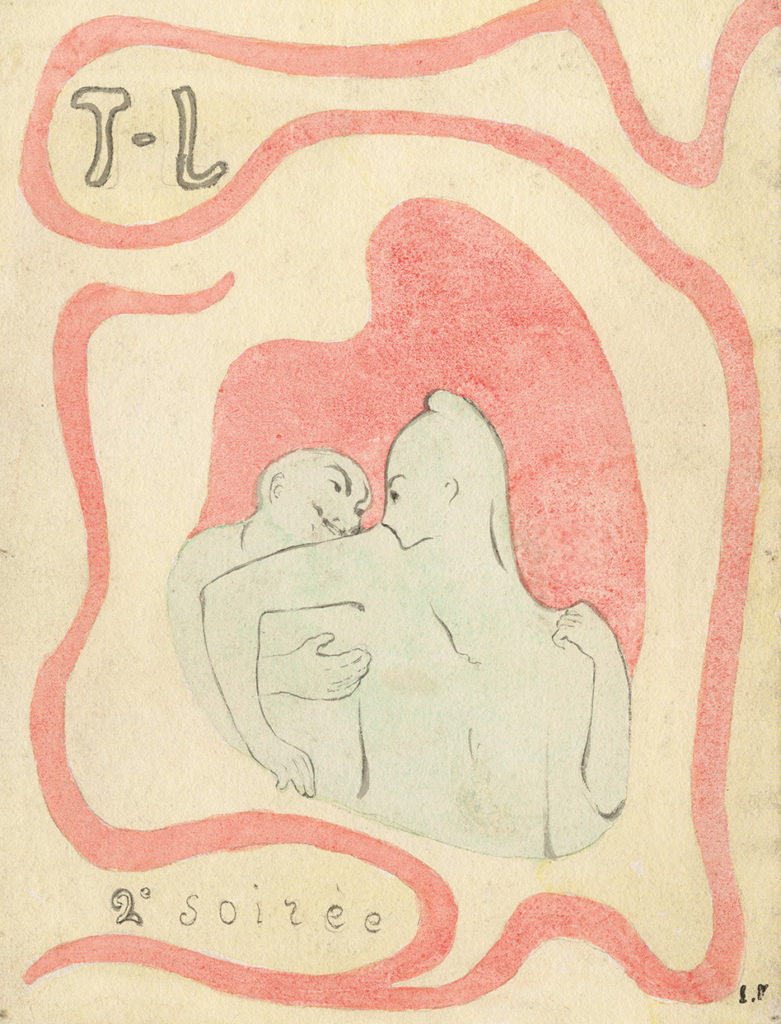« Le frontispice du Concile féerique par Vuillard, avec ses deux amants enlacés au sein d’un réseau d’ondes d’allure Jugendstil, est un sommet de sensualité tristanesque et décadente. Le futur peintre des Jardins publics est alors au faîte de son engagement envers l’idéal et son imaginaire symboliste est en crue. »
Such as Guy Cogeval wrote in Vuillard’s catalogue raisonné, this image is a perfect example of the artist’s symbolist work. An embracing couple, depicted with few lines, and surrounded with red arabesque, is a free interpretation of the poem by Jules Laforgue, presented at the Théâtre modern on December 11th, 1891. Far from a realist and illustrative representation of the text, Vuillard represented the sensuality and passion expressed in the poem. In this context, illustrating symbolist texts on posters, Vuillard developed his own vision: influenced by Japanese prints, he simplified the silhouette, and add a strong decorative aspect to his compositions.
Furthermore, the Nabi plaid a crucial role in the modernization of theatre in the late 19th century. Artists such as Bonnard and Vuillard participated to the design of the set, costumes and scenography of numerous shows at the Théâtre Libre. The symbolist dramatic art was enriched by a revolution in the way theatre was conceived and presented. One of the new ways was the dematerialization of the actors’ body: they were usually playing behind a veil or hidden from the spectators. This drawing is interesting in this perspective: the lovers’ bodies are not complete, and not clearly defined, not detailed and merged in one unique shape.






